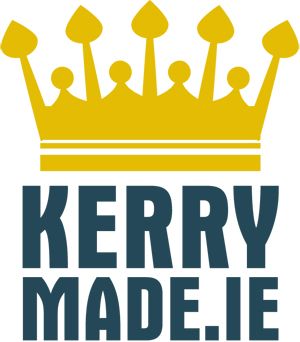During the summer of 1903, Ireland experienced a frenzy of automobile enthusiasm with a series of speed events and hill climbs known as the Irish Speed Fortnight. Competitors came from across Ireland, Britain and Europe.
Thousands of spectators gathered at Europe’s largest enclosed park, Phoenix Park, covering 1,750 acres. Along the 4.2-kilometer (2.6-mile) stretch of Chesterfield Avenue, they witnessed ten class-based time trials and head-to-head races, filled with excitement and anticipation.
Belgian competitor Barron de Forrest, driving a Mors, achieved an unrecognised world land speed record of 84.09 mph in the Phoenix Park. However, the record couldn’t stand as there was a gentle slope on Chesterfield Avenue and this was deemed an unfair advantage.
At the Phoenix Park event, Charles Stewart Rolls driving a French-built Mors, was the standout performer winning the most trophies. He secured third place in the Irish Automobile Club’s 200 Guineas race for cars up to 1000kg. In the flying Kilometre event, he finished second, only 0.6 seconds behind de Forrest’s record-breaking attempt. Rolls also emerged victorious in the exciting duel for the Private Members Cup, defeating JE Hutton in a Mercedes, with a speed of 79.25 mph.
There was a lot of glamour surrounding the competitors from Britain and Europe, however this was not the case with Charles Rolls who was notoriously tight with money and often he and his teenage mechanic/ co-driver T.C Moore Brabazon slept underneath the car ahead of events.
Their race car was the mighty 80 hp French-built Mors, stripped of its bodywork for increased speed and powered by a huge 9.2 litre V4 side-valve engine producing 80 hp.
Rear brakes were applied by a hand lever, while a separate foot pedal operated a transmission brake. The gearbox was 4-speed with a direct-drive top gear for when flat out. The Mors’ secret weapon was the use of pneumatic shock absorbers, two in the front and four in the rear to greatly improve road holding.
Two events in County Down followed where Charles Rolls continued to shine. He achieved a second-place finish in the Ballybannon Hillclimb on the following Tuesday. Although he didn’t appear in the results of the Cloagh sprint later that day, historical records inexplicably show that he set an impressive time of 2 minutes 14.2 seconds for the 2.5-mile course near Castlewellan.
Despite two major events remaining of the Irish Speed Fortnight, many competitors chose to return to their business interests in London and Europe. Charles Rolls, however, distinguished himself by staying for the final two events in Cork and Kerry.
On Saturday, July 11, the cars gathered in Cork city for a speed trial on the Carrigrohane straight, located on the Kerry road leading out of the city and later the venue for the mid-1930s Cork Grand Prix.
Charles Rolls continued his winning streak in his Mors, triumphantly completing the 2.25-mile course in an impressive time of 1 minute 49.6 seconds. He claimed victory in the Cork Constitution Cup, awarded to racing cars weighing under 1000kg.
Then it was on to the Kingdom of Kerry for the final event of speed fortnight when on July 15, 1903, the county hosted its first closed road motorsport event.
We have heard a story that while driving to Killarney, Charles Rolls encountered a setback when his Mors racing car suffered a front suspension failure near Moll’s Gap. Fortunately, local blacksmith Jimmy Shea, located on High Street in the town, skilfully repaired the car. Charles Rolls was deeply impressed by Shea’s craftsmanship and offered him a job to manage the forge in his English car factory.
Legend has it that Jimmy remarked, “Herself has never been to Tralee, never mind up sticks and go to England.” With that, the possibility of having one of the world’s top car manufacturers to be known as the Rolls-O’Shea Motor Car Company came to an end.
Around 11:00 am on July 15th 1903 on a hillside near Ballyfinnane, just 13 km from Tralee, Charles Rolls amazed 800 rain-soaked spectators with his driving ability. Despite the wet conditions, he raced up the 1,097m hill course at 72 km/h (45 mph), completing it in 1 minute 1.8 seconds. His impressive performance for setting the fastest time over a 500-yard course earned him the specially commissioned County Kerry Cup worth 30 Guineas, a silver trophy provided by Kerry County Council.
Unfortunately, J.W. Cross couldn’t participate in the final run-off with Rolls due to his Humber’s failure to start. For a time after the race, the prestigious “Kerry County Council Cup” was proudly displayed in the window of Switzer’s department store on Grafton Street, Dublin.
in 1993 on the 90th anniversary of the historic hill climb the Kingdom Veteran Vintage and Classic Car Club (KVVCCC) erected a monument to Rolls on the finish line.
This year, on the morning of July 15, 2023, exactly 120 years to the day after Rolls won the event and in the same inclement weather, the Kerry Vintage Veteran and Classic Car Club (KVVCCC) organised a classic car run retracing the original course and later in the day, members of the Irish Vintage and Classic Car Club’s Brass Brigade arm followed the same route.
Cars dating back to the early 1900s participated in the event. The oldest car on the day was a 1910 Renault but unfortunately no Rolls Royce cars attended. We are reliably informed that that no one came close to the time of 1 minute 1.8 seconds that Charles Rolls set in 1903 on an unpaved road, 2023 times of just over 3 minutes were recorded.
Information sources:
Green Dust: Ireland’s Unique Motor Racing History from 1900-1939 – Brendan Lynch
Irish Vintage and Classic Car Club’s Brass Brigade
Kerry Motorsport News
Kerry Vintage Veteran and Classic Car Club
Kilgarvan Motor Museum
Royal Irish Automobile Association Archives
Sports Car Digest
Uniquecarsandparts.com


